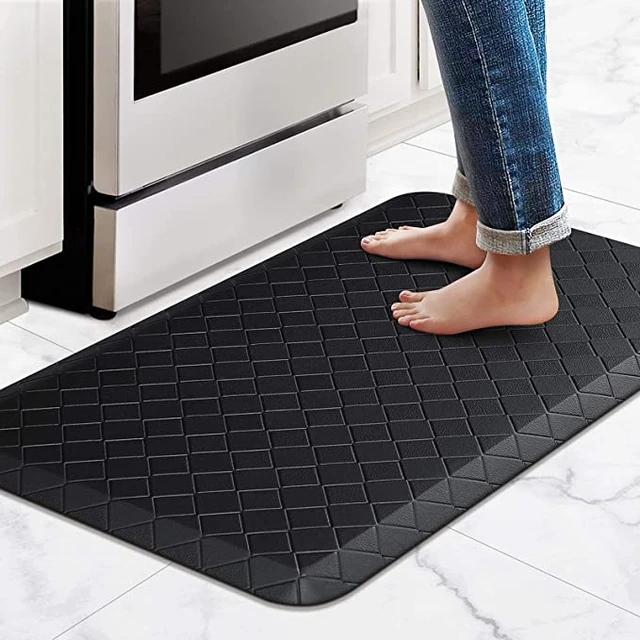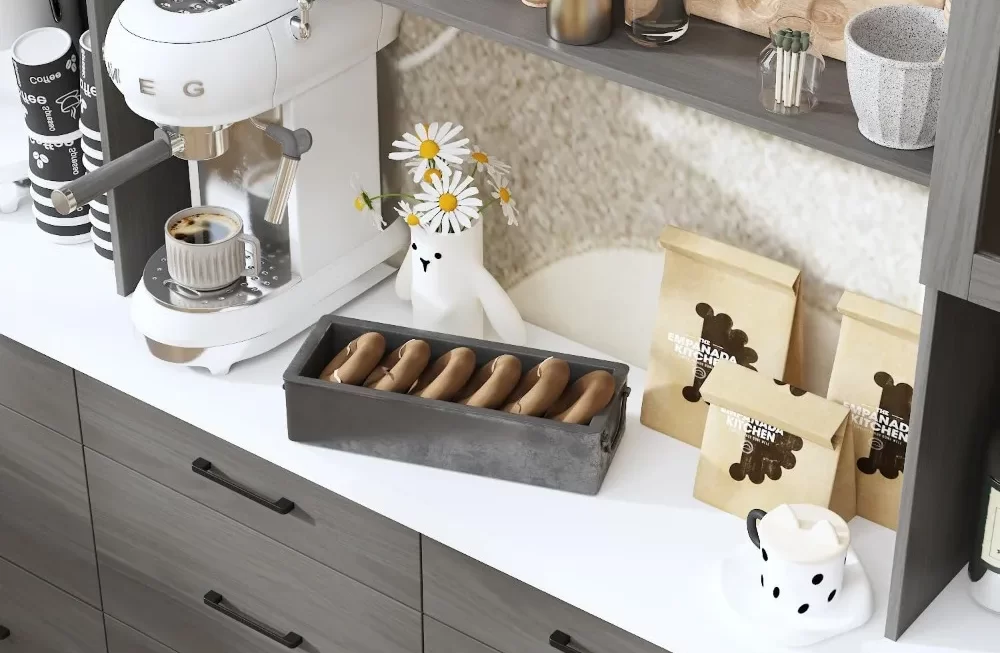 Introduction:
Introduction:
A well-chosen rug can add warmth, comfort, and style to your kitchen while also providing practical benefits such as noise reduction and protection for your flooring. In this comprehensive guide, we will explore various ideas for kitchen rugs, including size, material, patterns, and placement, to help you find the perfect rug that complements your kitchen’s design and enhances its functionality.
 Size and Shape Options
Size and Shape Options
Runner rugs are long and narrow, making them ideal for placing in front of counters or kitchen islands.
Choose a runner rug that extends the length of your workspace to provide cushioning and prevent fatigue while standing for extended periods.
Area Rugs:
Area rugs can add a focal point to larger kitchen spaces and create defined zones within an open-concept kitchen.
Ensure the rug is large enough to accommodate all chairs and furniture in the dining or seating area.
Round Rugs:
Round rugs can soften the sharp edges of a square or rectangular kitchen and add visual interest.
Place a round rug under a circular dining table or in a corner to create a cozy nook.
Material and Durability
Natural Fiber:
Natural fiber rugs, such as jute or sisal, offer a rustic and textured look that complements various kitchen styles.
They are durable, easy to clean, and resistant to stains, making them suitable for high-traffic kitchen areas.
Cotton:
Cotton rugs are soft, affordable, and available in a variety of patterns and colors.
They are machine-washable, making them a practical choice for kitchens prone to spills and messes.
Wool:
Wool rugs are known for their durability, softness, and natural resistance to stains and moisture.
They provide warmth and comfort underfoot, making them suitable for colder climates or kitchen areas where standing for long periods is common.
Synthetic Materials:
Synthetic rugs, such as nylon or polyester, offer durability and stain resistance at an affordable price point.
They are easy to clean and maintain, making them ideal for busy kitchens or households with children and pets.
Pattern and Design Considerations
Solid Colors:
Solid-colored rugs offer versatility and can complement various kitchen styles without overwhelming the space.
Select a color that coordinates with your kitchen’s color scheme or opt for a contrasting shade to make a bold statement.
Geometric Patterns:
Geometric patterns, such as stripes, chevron, or lattice designs, can add visual interest and a modern touch to your kitchen.
Ensure the pattern doesn’t clash with other patterns in your kitchen, such as backsplash tiles or wallpaper.
Floral or Botanical Prints:
Floral or botanical prints can bring a touch of nature and a pop of color to your kitchen.
Consider the size and scale of the print to ensure it complements your kitchen’s overall aesthetic.
Oriental or Persian-Inspired Designs:
Oriental or Persian-inspired rugs can add elegance and a traditional touch to your kitchen.
Choose a design with muted colors and a low pile height for easy maintenance in a high-traffic area.
 Rug Placement and Care
Rug Placement and Care
Kitchen Sink Rug:
Place a rug in front of the sink to provide comfort for standing and to catch water splashes.
Opt for a durable material that can withstand frequent exposure to water and moisture.
Kitchen Island Rug:
Consider placing a rug under a kitchen island to define the space and add warmth and texture.
Ensure the rug is large enough to accommodate the island and any chairs or stools surrounding it.
Dining Area Rug:
If you have a dining area in your kitchen, place a rug under the table to anchor the space and add cushioning for chairs.
Ensure the rug extends beyond the edges of the table when the chairs are pulled out for comfortable seating.
Rug Care:
Regularly vacuum and spot clean your kitchen rug to keep it free from dirt, crumbs, and spills.
Follow the manufacturer’s instructions for deep cleaning your rug, taking care to preserve its quality and appearance.
 Here are some of the benefits and drawbacks of using a kitchen rug:
Here are some of the benefits and drawbacks of using a kitchen rug:
Kitchen rugs can bring both advantages and disadvantages to the kitchen space. Here are some of the benefits and drawbacks of using a kitchen rug:
Benefits of Kitchen Rugs:
Comfort: One of the main benefits of a kitchen rug is that it provides added cushioning and comfort underfoot while standing or cooking for long periods. This can help to alleviate fatigue and provide relief from pressure on the feet and joints.
Slip Resistance: A kitchen rug with a non-slip backing can improve safety by reducing the risk of slips and falls on slippery kitchen floors. It can provide traction and stability, especially in areas prone to spills and moisture.
Noise Reduction: Kitchens can be noisy places with appliances, utensils, and foot traffic. A kitchen rug can help absorb and reduce noise, creating a quieter and more pleasant environment for cooking, dining, and conversations.
Style and Aesthetics: Kitchen rugs come in a variety of colors, patterns, and designs, allowing you to enhance the overall aesthetic appeal of your kitchen. They can complement your décor, add a pop of color, or act as a focal point to tie the room together.
Drawbacks of Kitchen Rugs:
Cleanliness and Maintenance: Kitchen rugs can be more challenging to clean and maintain compared to bare floors. They can trap dirt, crumbs, and spills, requiring more frequent vacuuming or washing to keep them clean and hygienic. Some rugs may not be machine washable, requiring professional cleaning.
Stains and Odors: Kitchen rugs are more susceptible to stains, especially in areas prone to spills, such as near the sink or stove. Depending on the material and quality, some rugs may be more prone to absorbing and retaining odors, requiring additional effort to keep them fresh.
Trip Hazards: If not properly secured, kitchen rugs can become tripping hazards. The corners or edges might curl up or slide on the floor, posing a risk, especially in high-traffic areas. It’s important to use rug pads or non-slip mats to ensure that the rug stays in place.
Bacterial Growth: Since kitchens are susceptible to spills and moisture, kitchen rugs can provide an environment for bacterial growth if not cleaned and dried thoroughly. This can affect both the rug’s cleanliness and the overall hygiene of the kitchen.
Considering these advantages and disadvantages, it’s important to weigh your specific needs, preferences, and maintenance capabilities when deciding whether to use a kitchen rug. Proper cleaning, regular maintenance, and selecting the right rug material can mitigate some of the challenges associated with kitchen rugs.
 Conclusion:
Conclusion:
Choosing the perfect kitchen rug involves considering factors such as size, material, patterns, and placement to enhance the functionality and style of your kitchen. By exploring options like runner rugs, area rugs, and round rugs, as well as materials like natural fiber, cotton, wool, and synthetics, you can find a rug that suits your kitchen’s specific needs. Whether you opt for solid colors, geometric patterns, floral prints, or traditional designs, ensure the rug complements your kitchen’s overall aesthetic. With proper placement and care, a well-chosen rug can create a cozy, stylish, and practical space that reflects your personal style and enhances your kitchen experience.


